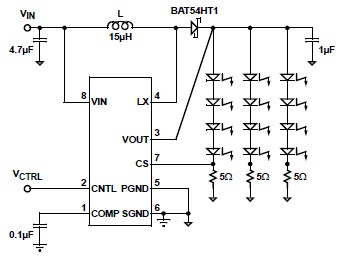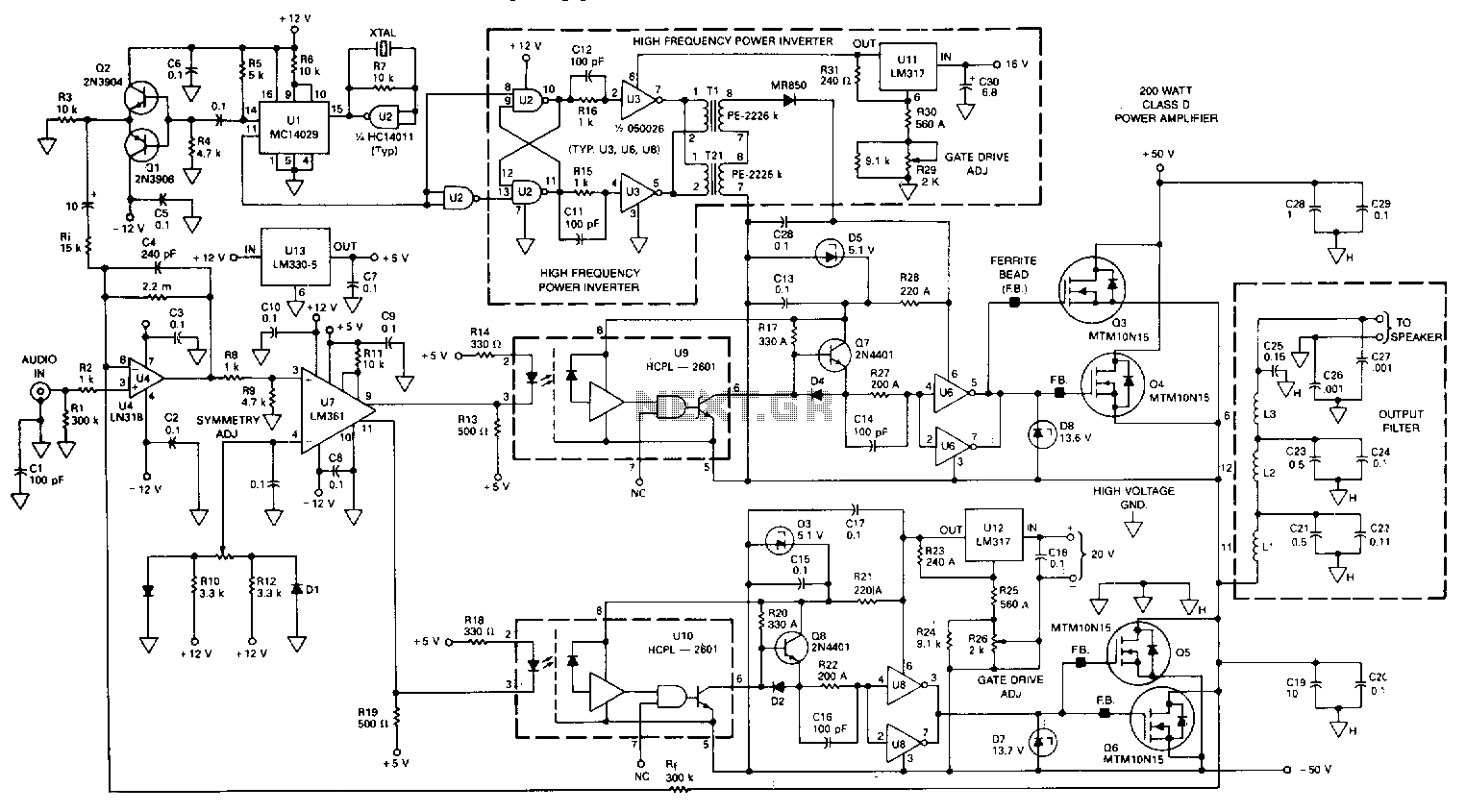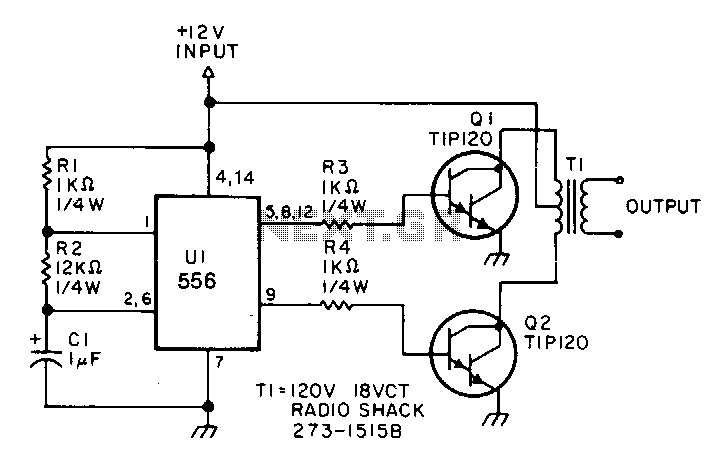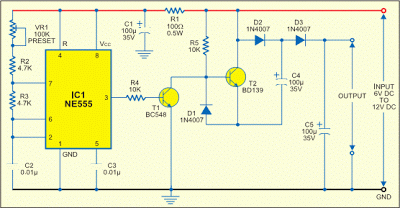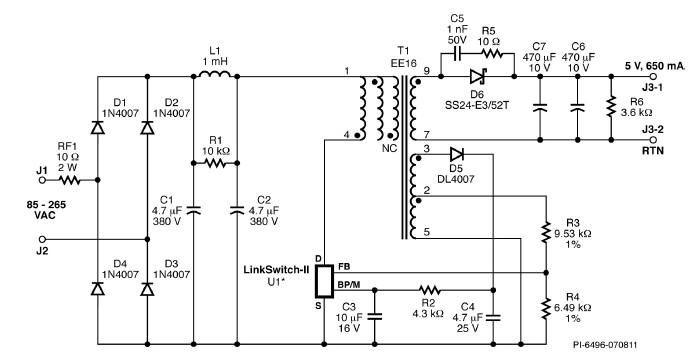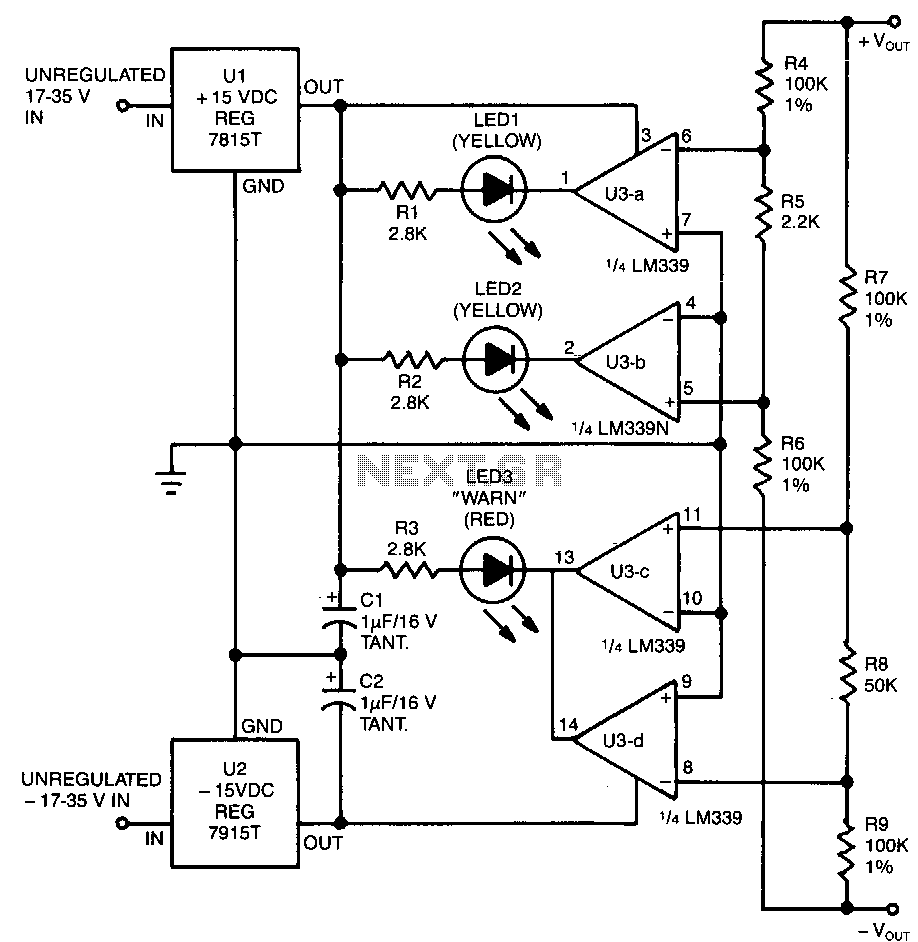
Smart power grid demands innovative design
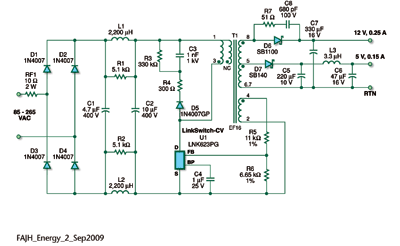
As electric utility companies face the challenge of reducing greenhouse gas emissions and managing rising costs and lead times for new generating capacity, they are adopting the concept of the smart grid. A key component of the smart grid is the smart power meter, which communicates with both energy suppliers and consumers to provide real-time information on energy consumption and costs. Energy suppliers must address peak loading on their electric networks, which can arise from user demand—such as air conditioning during hot weather—or equipment outages. The smart grid aims to mitigate the effects of peak loading by influencing user behavior and directly controlling consumer equipment. By balancing the network load, utilities can optimize their generation and transmission capacity, leading to cost savings and reduced emissions. The deployment of the smart grid is expected to provide fairly priced electricity for all customers through improved security, quality, reliability, and availability of power. Smart meters connected to a smart network will enable utilities to implement various control and incentive programs, including real-time variable pricing. Features such as in-home energy displays or eco-panels will alert consumers when peak loading rates apply, allowing them to make informed decisions about appliance use, such as postponing the operation of energy-intensive devices. With the integration of smart appliances or Demand Response Units (DRUs), utilities can directly manage the scheduling of high-consumption functions via the smart meter. The smart grid represents a significant advancement, with substantial energy savings anticipated. The Federal Energy Regulatory Commission (FERC) reported that, among the 140 million energy meters installed in the United States, 4.7% are smart-capable, a rise from less than 1% in 2006. FERC estimates that potential demand-response energy savings from smart metering could reach 41,000 MW, about 5.8% of peak demand. Many states are mandating smart meter installations through legislation and utility regulations, with an expected $28 billion investment over the next five years in electric transmission and distribution projects, primarily aimed at enhancing existing systems' intelligence. In April 2009, Miami announced plans to install over 1 million wireless smart meters in homes and businesses as part of the Energy Smart Miami initiative, which includes various technologies to improve electricity delivery and enable consumers to manage their power usage, including online access to usage data. Load-control programs with meter-based controls have been in place in the U.S. since 1968, evolving into various incentive-based programs. Direct load control allows energy suppliers to remotely shut down or cycle customer equipment to balance consumption, with customers receiving rate discounts for participating. Similar developments are occurring in Europe, with analysts predicting a 16% annual growth in the installed base of smart electricity meters through 2014, reaching an estimated 96 million units. The U.K. government aims to have smart meters installed in all 26 million homes by 2020, with projected net benefits of £2.5 to £3.6 billion over two decades through reduced electricity and gas costs. The smart meter is envisioned as the hub of a home information network, collecting data from smart appliances and communicating with energy suppliers. Various communication architectures are being explored, including mesh radio technology, power line modems, Ethernet, Wi-Fi, Bluetooth, and RS-485. To meet regional and local standards, smart meter communication systems must be flexible and upgradable. Security measures are essential to protect consumer data from unauthorized access. New regulations in the U.S., Europe, and other regions mandate low power consumption for meters and impose strict limits on standby power usage. Regardless of the communication protocols used, efficiency and power management within the meter are critical. The power supply for a smart meter typically needs to provide multiple 5V and 12V outputs from a universal 85 to 265 Vac source, achieving efficiency standards set by the California Energy Commission (CEC) and Energy Star EPS v2, as well as meeting conducted EMI standards like CISPR22B and EN55022B. An example of a compliant power supply circuit employs a Power Integrations LinkSwitch-CV switch-mode controller with an integrated 700-V MOSFET switch. This integrated circuit includes protection features such as automatic restart for open or short faults, output open-circuit conditions, hysteretic thermal shutdown, and extended creepage distances between high- and low-voltage pins. The circuit utilizes a flyback configuration, with primary current flowing through specific transformer windings and controlled by the MOSFET. An RCD-R clamp is used to limit voltage spikes caused by leakage inductance. The controller employs an ON/OFF control scheme for output voltage regulation, requiring no secondary-side control or optocoupler, with feedback managed through a transformer winding. Despite a low component count, the design achieves regulated outputs of ±5% for 5V and ±10% for 12V across the full input voltage and load range. A pi filter configuration minimizes conducted differential mode EMI. The circuit is robust against surges and complies with IEC950 and UL1950 Class II safety standards, with a low component count enhancing overall reliability. This reduction in components translates into a significant decrease in the failure-in-time (FIT) rate, further supporting the efficiency and reliability of the smart meter power supply design.As electric utility companies grapple with the need to reduce greenhouse gas emissions and the increasing costs and lead-times for introducing new generating capacity they are turning to the concept of the smart grid. One of the core elements of the smart grid is the smart power meter that communicates with both the energy supplier and the cons
umer to provide real-time information on energy consumption and cost. The energy supplier`s biggest headache is catering for the peak loading on their electric network. Peak loads can be related to user demand, such as air conditioners in hot weather, or may be the result of equipment outages. The smart grid`s aim is to reduce the impact of peak loading both by changing user behavior and by directly controlling the consumer`s equipment.
By leveling out the network load, utilities can more efficiently manage their generating and transmission capacity, saving cost and reducing emissions. Deploying the smart grid should provide equitably priced electricity for all customers through enhanced security, quality, reliability, and availability of power.
Smart meters communicating with a smart network will allow the utility to implement a variety of control and incentive programs, such as real-time variable pricing. With features like in-home energy displays or eco-panels, the consumer can be warned when a peak loading rate is being charged.
They can then make an informed choice to switch off appliances such as dryers and postpone their use until a lower rate is available. With smart appliances or Demand Response Units (DRUs) controlling appliances in the home, the rescheduling of high consumption functions can be controlled directly by the utility via the smart meter.
The smart grid is no empty promise it is coming now and the energy savings are substantial. The Federal Energy Regulatory Commission (FERC) found that of the 140 million energy meters installed across the United States, 4. 7% are smart capable up from less than 1% in 2006. According to FERC, the potential demand-response energy savings from the use of smart metering is 41, 000 MW, or about 5.
8% of peak demand. Many states are introducing mandatory smart meter deployments through legislation and utility regulation. $28 billion is forecast to be spent over the next five years on electric transmission and distribution projects, much of it adding intelligence to existing systems.
In April 2009, the city of Miami announced plans to put more than 1 million wireless smart meters into every home and most businesses in the Miami-Dade area as part of the Energy Smart Miami initiative. The initiative includes a range of technologies to improve electricity delivery and help consumers manage their power usage, including the ability to log on to a Web site and review their power usage over time.
Load-control programs with meter-based controls were first introduced in the U. S. in 1968. Since then, several kinds of incentive-based programs have evolved. With direct load control, the energy supplier remotely shuts down or cycles a customer`s equipment to balance out overall consumption. The customer benefits from a rate discount for agreeing to reduce load during system contingencies. In Europe, the same process is occurring in many countries. According to the analyst company Berg Insight (Gothenburg, Sweden), the installed base for smart electricity meters in Europe will grow by 16% annually through 2014.
At the end of that period, the number of installed smart meters is expected to reach 96 million units. The U. K. government has announced plans to have smart meters installed in all 26 million U. K. homes by 2020. Government officials estimate the project will deliver net benefits of £2. 5 to £3. 6 billion over the next two decades in the form of lower bills and reduced costs for electric and gas companies.
The smart meter is envisioned to be at the center of a home information network, gathering data from smart appliances and communicating with the energy supplier (see Fig. 1). Many communications architectures are being considered, including mesh radio technology, power line modems, Ethernet, Wi-Fi, Bluetooth, and RS-485.
To accommodate differing regional and local requirements and standards, the communication handling in smart meters must be both flexible and upgradable. Security is also important to prevent unauthorized intrusion to consumer`s data. New regulations in the U. S. , Europe, and other regions require very low power consumption by the meter and place tight restrictions on standby power consumption.
Whatever the communications protocols employed, efficiency and power management within the meter are of prime importance. The power supply must work efficiently over a wide dynamic range with fast response to changing demands when transmitting data or fulfilling other functions.
This requires careful power circuit design. The power supply for a smart meter is typically required to deliver multiple 5- and 12-V outputs from universal 85 to 265 Vac with efficiency meeting California Energy Commission (CEC) / Energy Star EPS v2 and conducted EMI meeting CISPR22B / EN55022B. Figure 2 shows an example of a supply meeting these requirements. This circuit employs a Power Integrations LinkSwitch-CV switch-mode controller with an integrated 700-V MOSFET switch (U1).
The IC has protection features including auto restart for open/short faults and output open-circuit conditions, hysteretic thermal shutdown, and an extended creepage distance between high- and low-voltage pins on the package. The circuit employs a flyback configuration with the primary current passing through winding 1-3 of T1 and switched by the MOSFET in U1.
An RCD-R clamp (D5, R3, R4, and C3) limits the leakage inductance drain voltage spike. U1 employs a unique ON/OFF control scheme to provide output voltage regulation. The circuit requires no secondary-side control or optocoupler. The output is sensed by a feedback winding on the transformer. Despite the very low component count, a regulation of ±5% on the 5-V output and ±10% on the 12-V output is achieved across the full input voltage and load range. The pi filter (L1, L2, C1, and C2) minimizes conducted differential mode EMI. The circuit handles surges well and is designed to meet IEC950 and UL1950 Class II safety requirements.
The low component count enhances reliability. The 30% component reduction resulting from using primary-side control translates into a 22% decrease in FIT rate. – 🔗 External reference
umer to provide real-time information on energy consumption and cost. The energy supplier`s biggest headache is catering for the peak loading on their electric network. Peak loads can be related to user demand, such as air conditioners in hot weather, or may be the result of equipment outages. The smart grid`s aim is to reduce the impact of peak loading both by changing user behavior and by directly controlling the consumer`s equipment.
By leveling out the network load, utilities can more efficiently manage their generating and transmission capacity, saving cost and reducing emissions. Deploying the smart grid should provide equitably priced electricity for all customers through enhanced security, quality, reliability, and availability of power.
Smart meters communicating with a smart network will allow the utility to implement a variety of control and incentive programs, such as real-time variable pricing. With features like in-home energy displays or eco-panels, the consumer can be warned when a peak loading rate is being charged.
They can then make an informed choice to switch off appliances such as dryers and postpone their use until a lower rate is available. With smart appliances or Demand Response Units (DRUs) controlling appliances in the home, the rescheduling of high consumption functions can be controlled directly by the utility via the smart meter.
The smart grid is no empty promise it is coming now and the energy savings are substantial. The Federal Energy Regulatory Commission (FERC) found that of the 140 million energy meters installed across the United States, 4. 7% are smart capable up from less than 1% in 2006. According to FERC, the potential demand-response energy savings from the use of smart metering is 41, 000 MW, or about 5.
8% of peak demand. Many states are introducing mandatory smart meter deployments through legislation and utility regulation. $28 billion is forecast to be spent over the next five years on electric transmission and distribution projects, much of it adding intelligence to existing systems.
In April 2009, the city of Miami announced plans to put more than 1 million wireless smart meters into every home and most businesses in the Miami-Dade area as part of the Energy Smart Miami initiative. The initiative includes a range of technologies to improve electricity delivery and help consumers manage their power usage, including the ability to log on to a Web site and review their power usage over time.
Load-control programs with meter-based controls were first introduced in the U. S. in 1968. Since then, several kinds of incentive-based programs have evolved. With direct load control, the energy supplier remotely shuts down or cycles a customer`s equipment to balance out overall consumption. The customer benefits from a rate discount for agreeing to reduce load during system contingencies. In Europe, the same process is occurring in many countries. According to the analyst company Berg Insight (Gothenburg, Sweden), the installed base for smart electricity meters in Europe will grow by 16% annually through 2014.
At the end of that period, the number of installed smart meters is expected to reach 96 million units. The U. K. government has announced plans to have smart meters installed in all 26 million U. K. homes by 2020. Government officials estimate the project will deliver net benefits of £2. 5 to £3. 6 billion over the next two decades in the form of lower bills and reduced costs for electric and gas companies.
The smart meter is envisioned to be at the center of a home information network, gathering data from smart appliances and communicating with the energy supplier (see Fig. 1). Many communications architectures are being considered, including mesh radio technology, power line modems, Ethernet, Wi-Fi, Bluetooth, and RS-485.
To accommodate differing regional and local requirements and standards, the communication handling in smart meters must be both flexible and upgradable. Security is also important to prevent unauthorized intrusion to consumer`s data. New regulations in the U. S. , Europe, and other regions require very low power consumption by the meter and place tight restrictions on standby power consumption.
Whatever the communications protocols employed, efficiency and power management within the meter are of prime importance. The power supply must work efficiently over a wide dynamic range with fast response to changing demands when transmitting data or fulfilling other functions.
This requires careful power circuit design. The power supply for a smart meter is typically required to deliver multiple 5- and 12-V outputs from universal 85 to 265 Vac with efficiency meeting California Energy Commission (CEC) / Energy Star EPS v2 and conducted EMI meeting CISPR22B / EN55022B. Figure 2 shows an example of a supply meeting these requirements. This circuit employs a Power Integrations LinkSwitch-CV switch-mode controller with an integrated 700-V MOSFET switch (U1).
The IC has protection features including auto restart for open/short faults and output open-circuit conditions, hysteretic thermal shutdown, and an extended creepage distance between high- and low-voltage pins on the package. The circuit employs a flyback configuration with the primary current passing through winding 1-3 of T1 and switched by the MOSFET in U1.
An RCD-R clamp (D5, R3, R4, and C3) limits the leakage inductance drain voltage spike. U1 employs a unique ON/OFF control scheme to provide output voltage regulation. The circuit requires no secondary-side control or optocoupler. The output is sensed by a feedback winding on the transformer. Despite the very low component count, a regulation of ±5% on the 5-V output and ±10% on the 12-V output is achieved across the full input voltage and load range. The pi filter (L1, L2, C1, and C2) minimizes conducted differential mode EMI. The circuit handles surges well and is designed to meet IEC950 and UL1950 Class II safety requirements.
The low component count enhances reliability. The 30% component reduction resulting from using primary-side control translates into a 22% decrease in FIT rate. – 🔗 External reference
